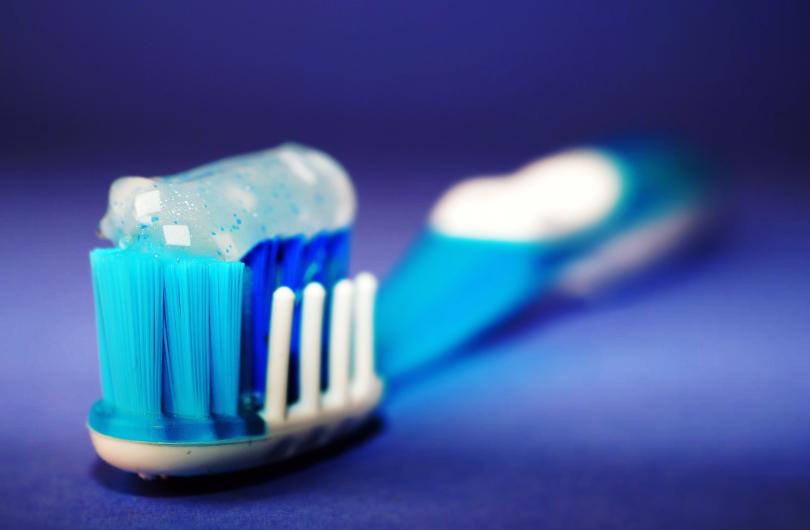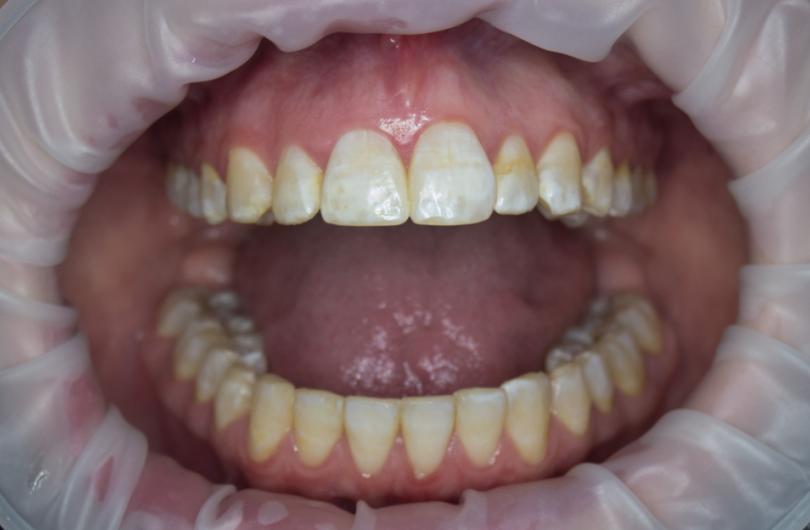What Dental Issues Can Veneers Fix?

Most people know that veneers are a cosmetic dental treatment that produce beautiful smiles. What types of dental problems do veneers “fix”? Veneers act as a covering over the visible portion of natural teeth, recreating the appearance of the smile. For this reason, the problems covered by veneers are usually exclusively cosmetic in nature.
Discolorations and Dark Stains
There are certain types of discolorations or defects that do not improve with professional teeth whitening. Intrinsic staining (that which affects the internal tooth structure, rather than just the outer layer of enamel) typically does not respond to teeth whitening. Issues like tetracycline staining or fluorosis leave dark, obvious discolorations that are unattractive. The good news is that we can cover these dark internal stains with porcelain veneers, giving a uniform white appearance to the smile.
Mild Crowding
By “fix”, we really mean that we can cover it and mask its appearance. Veneers do not actually straighten or move the teeth in any way. By covering the natural teeth on the outer surface facing the lip, we can recreate a straighter appearance of the front teeth. There are limitations to the amount of change in appearance a veneer can accomplish, so typically we are only able to fix mild crowding.
Severely rotated or overlapped teeth are not candidates for veneers. They must be straightened separately before covering with veneers.
Small Gaps between the Teeth
As with mild crowding, we can also cover mild spacing between teeth with veneers. As you can understand, covering gaps with veneers requires a slight widening of the teeth. It is important to consider exactly how wide the teeth will be when closing the spaces. In cases of gaps, we always recommend a try-in to see if the wider appearance meets your cosmetic goals. If the teeth appear too wide, then your next option is to close the gaps with clear aligners like Invisalign® before covering with veneers.
Misshapen or Small Teeth
The biggest advantage of veneers over teeth whitening is the ability to change the shape and size of teeth. Many people suffer from congenitally small lateral incisors (the teeth on both sides of the front two teeth), which affects the appearance of the smile. Veneers cover and enlarge these teeth to a more natural shape and size, so they blend in beautifully.
Sometimes, teeth have developmental defects or previous injuries that create an unusual shape. Veneers can re-contour and reshape the underlying teeth to match the rest of the smile.
What are some of the Things Veneers Cannot Fix?
It may be even more helpful to learn which things veneers are not capable of “fixing”. These limitations stem from the fact that veneers cover only the visible portion of the teeth. This includes the surface facing the lips and cheeks, as well as a small portion of the biting surface. Typically, veneers just barely wrap over the biting edge of the front teeth.
Missing Teeth
A veneer is not strong enough to support an entire missing tooth, so veneers are not capable of acting as anchors for a dental bridge. You can still use veneers to improve the overall appearance of the smile once the missing tooth is replaced with a dental implant or bridge. Your dentist will work with the lab technician to blend the veneers in with the replacement tooth so that it matches perfectly to produce a beautiful smile.
Severely Crooked Teeth
As you can imagine, we cannot cover the lip-side of a tooth that is overlapped by its neighboring tooth. Severe crowding and rotation makes it impossible for us to create symmetrical, naturally shaped teeth with veneers.
Very Large Gaps between Teeth
In the same way, very large spaces require making the veneers unnaturally wide. While we understand the desire to close gaps between the teeth, teeth that are much too large for the face are not attractive. Speak with your dentist about your options to at least partially close the spaces before proceeding with veneers. Our goal is to always produce the most beautiful, naturally appearing smile for each patient.
A Bad Bite
Veneers cannot change the relationship between the upper and lower jaws. In cases of severe under- or over-bites, veneers are not capable of correcting these bite problems. When the upper and lower front teeth do not contact each other, leaving a space between then even when the back teeth are together, we call it an “open bite”. It is possible to improve the appearance of very minor open bites with veneers. If you have a bad bite, it is important to work with both your dentist and an orthodontist to discuss options for improving your smile and the bite.
Old, Unattractive Dental Work
Many people have crowns or bridges on the front teeth that are decades old. If these have a metal core, they may create the appearance of a black or dark grey line at the gums. This is not something veneers can cover. The dental work itself must be replaced.
Large Cavities
Because veneers cover only the visible portion of teeth, they do not fill in areas of decay. Large cavities on the front teeth require other types of dental work. These restorations can also be very cosmetic in nature. We just do not combine them with veneers.
A “Gummy” Smile
Do you see a lot of pink gum tissue between your upper front teeth and your upper lip? This is what we call a “gummy” smile. It is impossible to cover gum tissue with veneers. In order to change the appearance of too much gum tissue, we first remove excessive gum tissue in a separate procedure. That procedure alone may accomplish your cosmetic goals. If it does not, then you can always follow up with veneers to improve the teeth and meet the new, higher gumline.
More Questions about Veneers?
Call today to schedule a cosmetic consultation with our wonderful dentists. We can answer any question you have about veneers, assess your specific situation and discuss your options to meet your smile goals.
More articles

2019
Hard vs. Soft Toothbrush
We get this question very frequently, and the answer is very simple and straightforward: SOFT! There is never any good reason to use a hard toothbrush. Our dentists and dental hygienists will always stress to you the importance of using a soft-bristled toothbrush.

2019
What Dental Issues Can Veneers Fix?
Most people know that veneers are a cosmetic dental treatment that produce beautiful smiles. What types of dental problems do veneers “fix”? Veneers act as a covering over the visible portion of natural teeth, recreating the appearance of the smile. For this reason, the problems covered by veneers are usually exclusively cosmetic in nature.

2019
Things to Consider Before Getting Veneers
Cosmetic dentistry is a wonderful way to improve the appearance of your smile. It encompasses many different dental procedures, and one of the most popular is porcelain veneers. If you are thinking about investing in cosmetic dental work, this blog will help you understand what you need to know about veneers.
